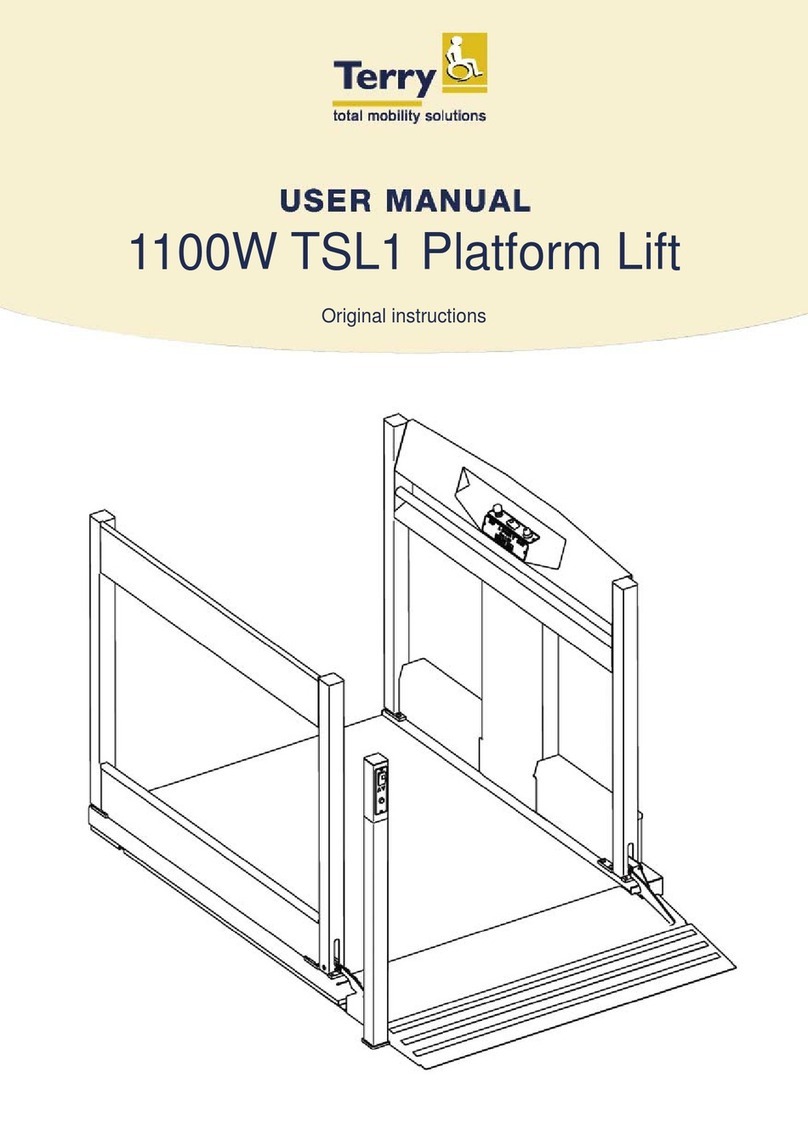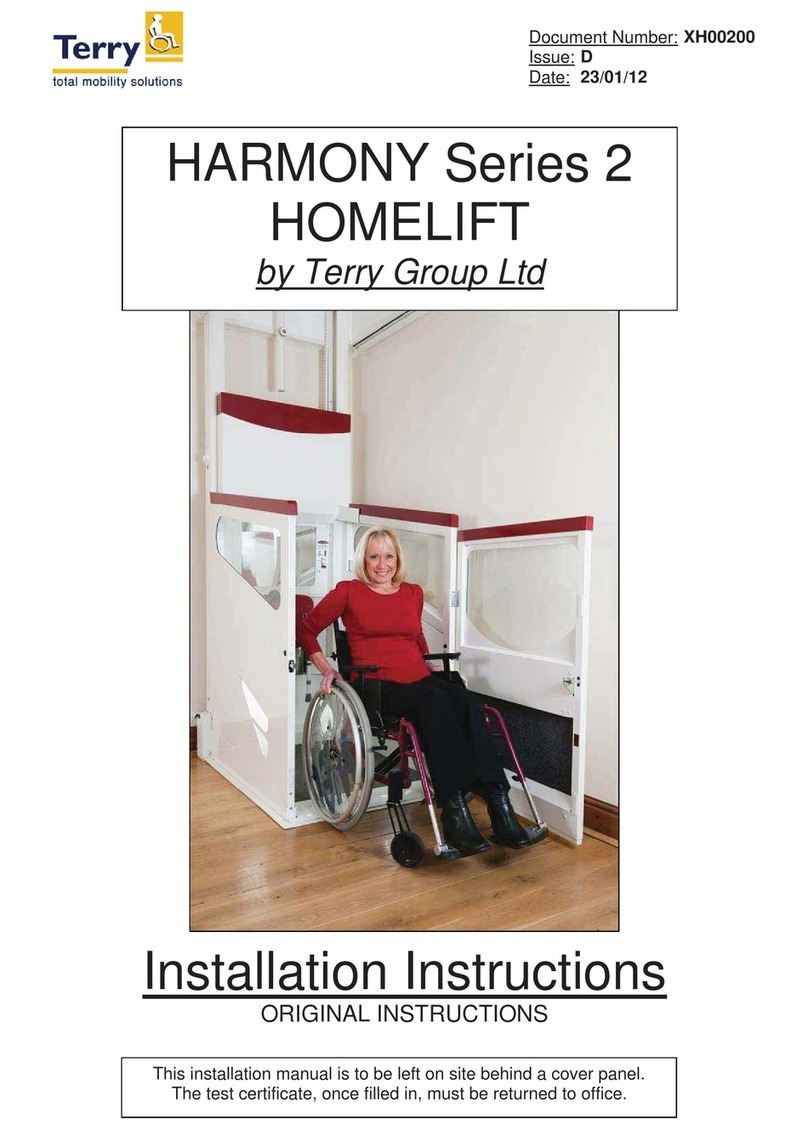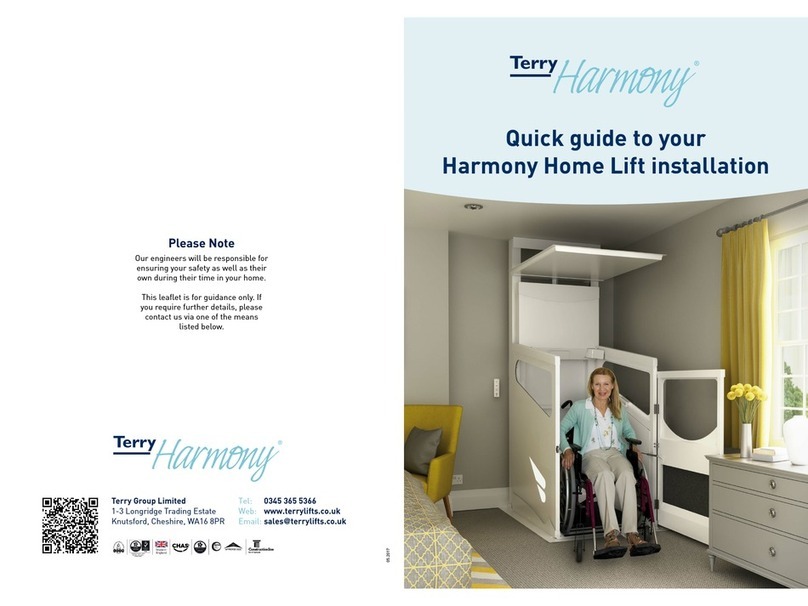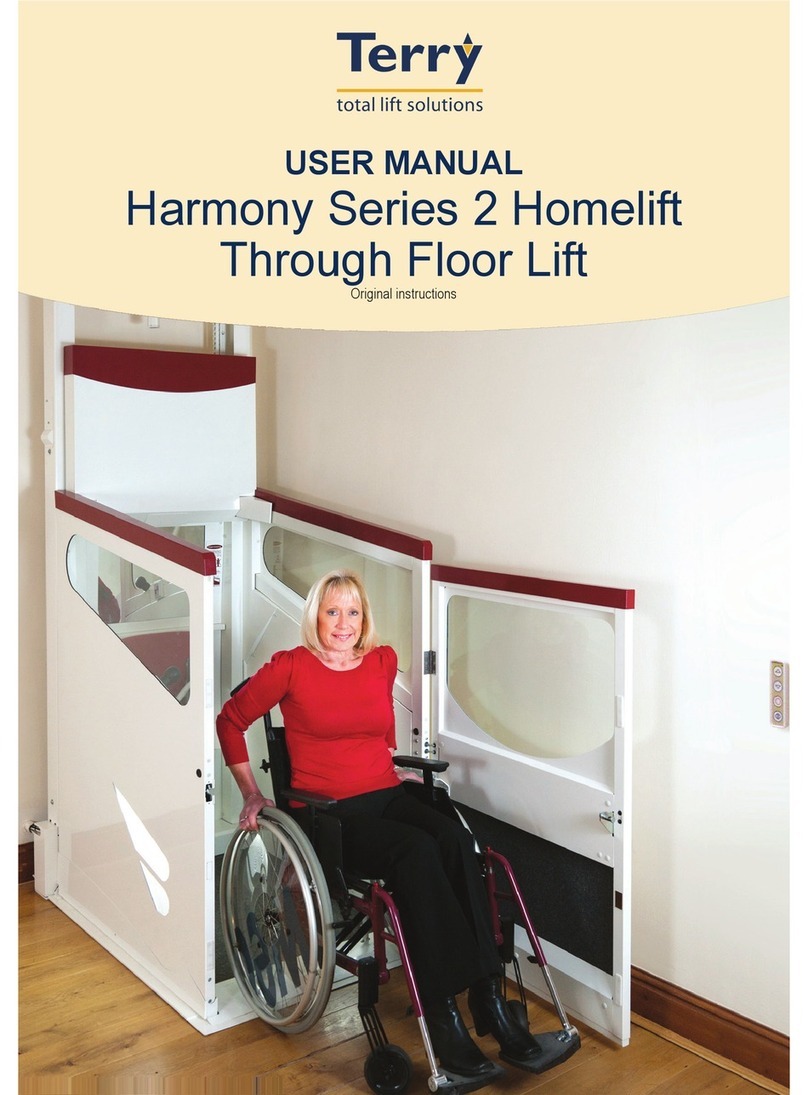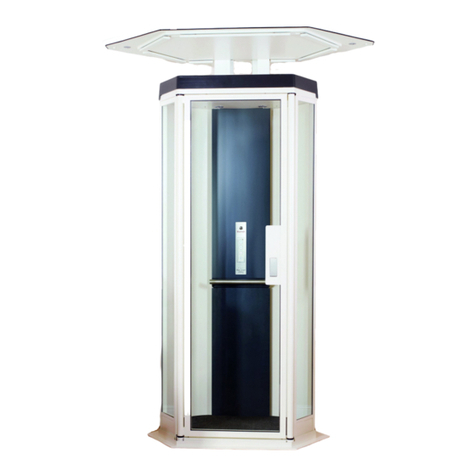
GENERAL DO’S AND DON’TS
• Never switch off the power supply to the lift, even when you go
away. The lift control circuits are fed by a battery, which must be
kept on constant charge.
• The lift should always be returned to the lower level when
not in use. If it is left upstairs for prolonged periods, it will
occasionally re-level itself depending on conditions. The lift must
be left at the lower level if the mains is turned off.
• Keep hold of the door whether opening or closing.
• Always close the door after using the lift.
• Never allow children to play in, under or around the lift. If
children are in the house, always isolate the lift using the
optional remote control fob, see page 7.
• Ensure that the area under the lift is kept clear. The underpan
surface is fitted with sensors, which automatically stop the lift if it
strikes an object (see pg.6).
• Always keep the key fob, if supplied and emergency release
key in a safe place near the lift. The in-car release keys behind
the centre cover should not be removed unless there is an
emergency.
• Do not place any object on the aperture infill or stand on it when
the lift is in operation. Ensure that as far as practical, the area
around the travelling infill panel is clear of persons (particularly
children) when the lift is being operated. The infill panel is fitted
with sensors that automatically stop the lift if the infill panel is
obstructed (see pg.6)
• Only use the lift for transporting up to 2 people standing
or 1 seated between fixed floor levels. Do not use for the
transortation of goods.
• Always treat your lift with the respect that should be shown to
electrical and mechanical equipment.
• Safety related components should only be adjusted and reset
by a competent person.
5

















